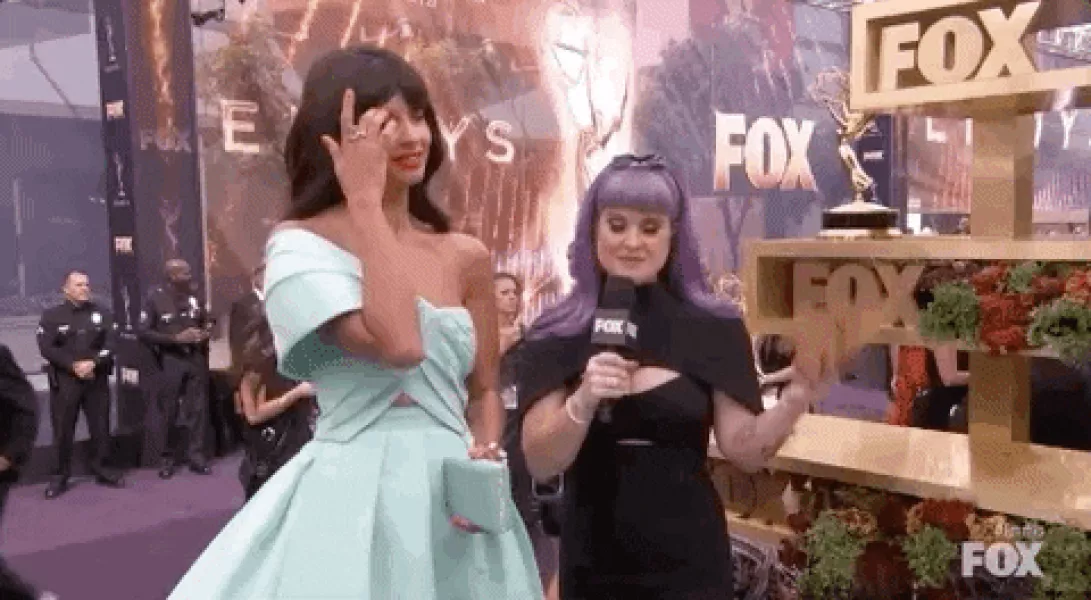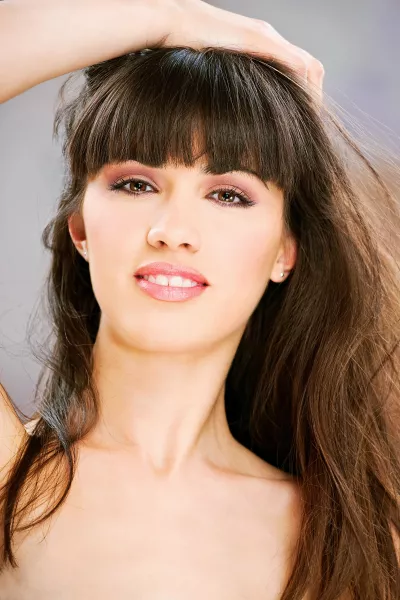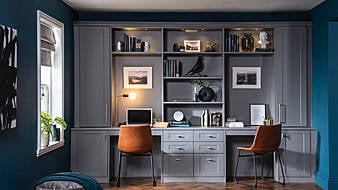Fancying a fringe for the first time? Or returning to the bangs (as Americans call them) you loved in the past? You’re not the only one.
“Fringes have seen a real revival as salons are back open,” says Adam Reed, hair stylist and UK editorial ambassador for L’Oréal Professionnel. People are craving “something new and fresh, but still easy to achieve – this is what makes a fringe so appealing.”
Reed says that Seventies-inspired styles, as seen on the likes of Jameela Jamil, are a major trend: “The curtain fringe is, without doubt, one of the most versatile fringe styles, and the perfect choice if your fringe is now outgrown during lockdown and you’re not sure if you want to go back to a high-maintenance style that needs regular trimming.

“We’re also seeing a rise in the blunt fringe, with thick, straight strands covering the brow in a style that is both sophisticated and on-trend. With the revival of the Seventies shag, we’re also seeing a rise in high texture and curly fringes.”
So, there are plenty of options for achieving a trendy and flattering ‘do, but it’s important to remember that not every fringe will suit every face. Here are five things you need to know before going in for the chop…
1. Choose a fringe that suits your face shape
“If you have never had a fringe before, the aim is to bring is to bring out your best features on your face, such as the eyes and cheekbones,” notes Belle Cannan, co-founder of Salon Sloane.
Wondering if the curtain fringe is for you? “Heavy centred parted fringes with a curved shape look very cool, and the good news is they flatter most face shapes,” Cannan says. “A side fringe flatters a square shaped face, especially if blended into a long layered hairstyle, adding a choppy texture.”
Reed says: “Round face shapes lend themselves well to sweeping fringes that are a little longer and fall around the cheekbones, whereas oval face shapes may look to something that’s fuller and has a blunt style.”
2. Consider your hair length

Not only do you want a fringe that flatters your face, you want it tailored to suit your overall hairstyle and length.
“Short hair looks great with a fringe, as it makes fine hair look thicker and fuller, especially an asymmetric fringe side swept or a pixie haircut,” says Cannan. “And a classic bob haircut looks great with a bold blunt fringe – it really draws attention to the eyes, it’s very French.”
She recommends a softer fringe for longer hair: “A relaxed, laid back, wispy fringe looks great on shoulder-length hair, either on the eyebrow or just below.”
3. Some fringes require more maintenance than others
A blunt fringe – cut just above your brows – can look very cool, but will require daily styling and regular trims to keep it looking neat and tidy. If you’re not prepared to put in the effort, you might want to stick to a more low-maintenance style.
“Before cutting in a fringe, always discuss your maintenance plan,” says Reed. “If you are looking for something low-maintenance, a curtain fringe can be perfect. Its edges are shattered to allow for a soft sweep that is undone, lending itself well to a grown-out style.”
4. You’ll need the right products

As for styling, it make take a bit of time to get used to your new blow-drying routine, and you’ll need to invest in a few products to keep your fringe in pristine condition.
“Often, people will use heat to style and maintain their fringe, so ensure you have a full arsenal of heat protection to prevent from damage and keep the hair in its best condition,” says Reed. “And ensure you also include a mask in your weekly routine.”
After washing your hair, always dry your fringe first, says Cannan: “Apply products to the roots, and separate the fringe away from the rest of the hair. Take small sections and place the brush at the roots, directing the flow of the hairdryer from the roots to tips.”
Reed adds: “You might find when you first get your fringe, that you’re touching and playing with it a lot, which may produce excess oiliness. Make dry shampoo your best friend.”
And to perfect the trendy Seventies fringe, he says: “Spray a little hairspray onto your fingers and gently part in the centre to create the ultimate curtain fringe.”
5. Discuss fringe options with your stylist
“Before any style change, always have a thorough consultation with your stylist to discuss the best look for you, taking into consideration various details, from maintenance, to hair type and texture,” Reed says.
This will help you decide “how far back a fringe should start on your forehead, dependent on your shape and size. If there’s not much space between your brows and hairline, start two inches back to make a smaller forehead appear longer”.
Still not sure if a fringe is for you? Play around with wigs or clip-in fringes, Reed suggests: “They’re the perfect way to test the look without the growing-out stage. You can also get your stylist to wash and style them so they move in the direction you want – or ask them to cut if necessary.”
Fringe benefits: 4 hairdresser-approved products for taming your tresses

1. L’Oréal Professionnel Serie Expert Blow-dry Fluidifier, Notino

2. L’Oréal Professionnel Tecni.ART Pli Shaper, LookFantastic

3. Christophe Robin Luscious Curl Cream with Flaxseed Oil

4. Sisley The Cream 230







